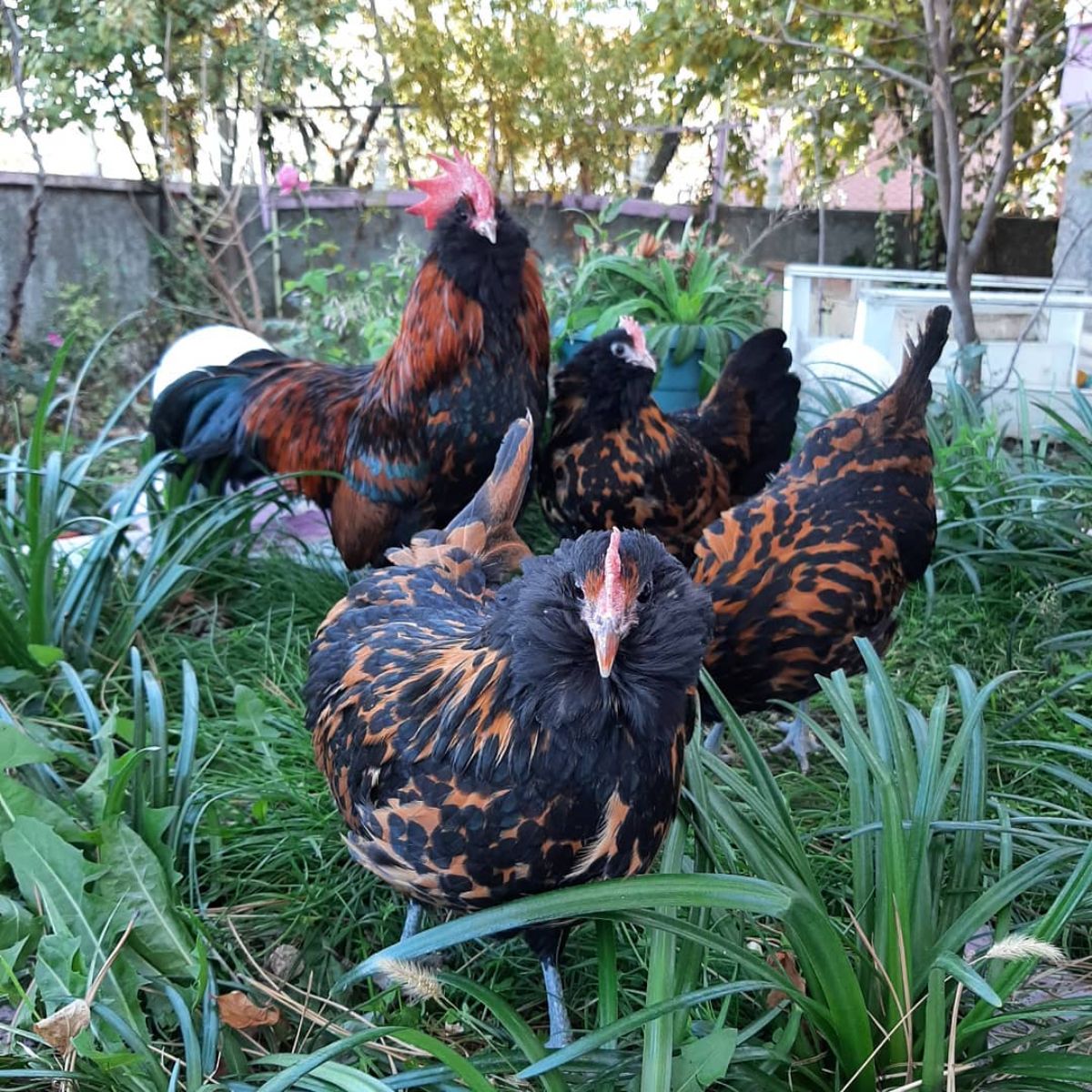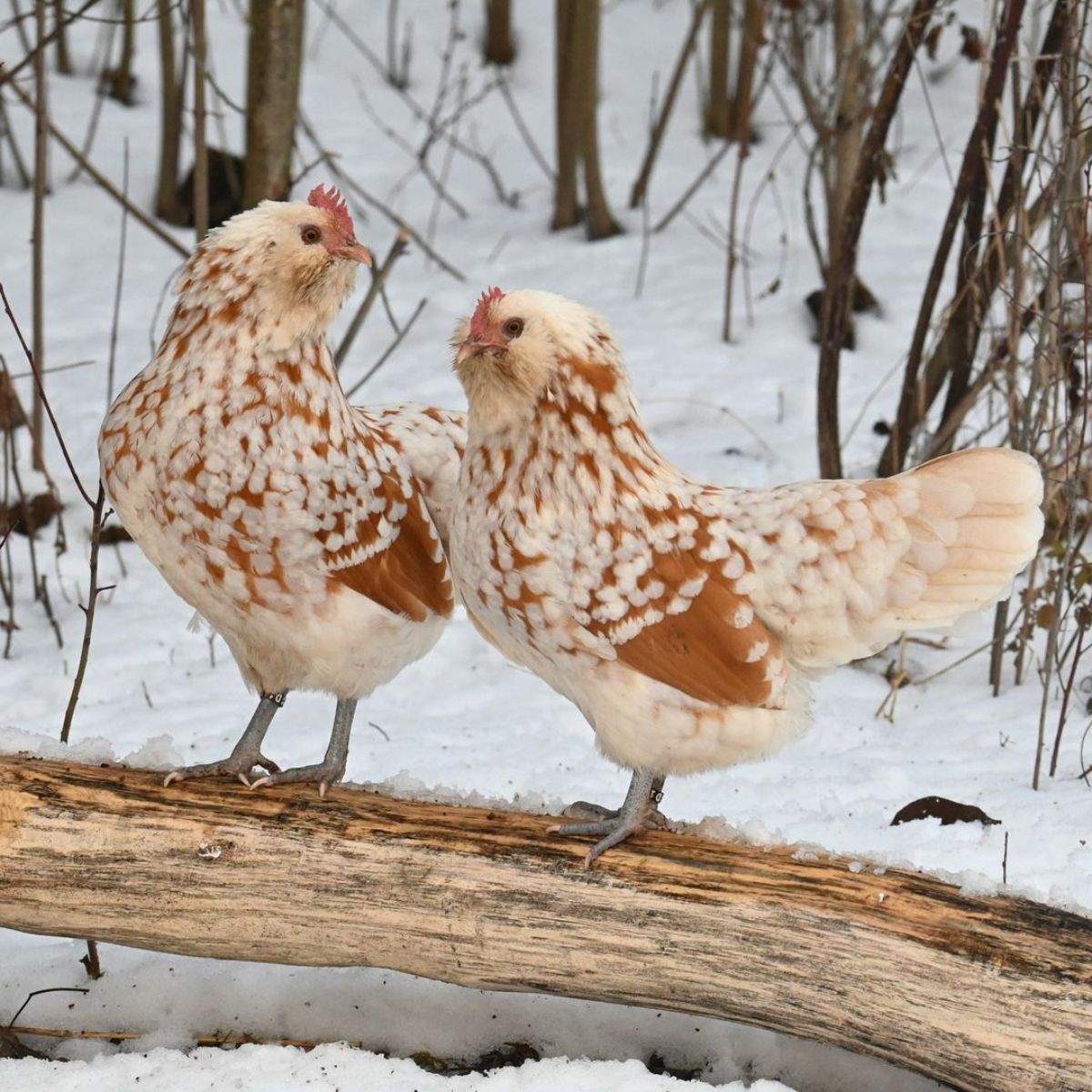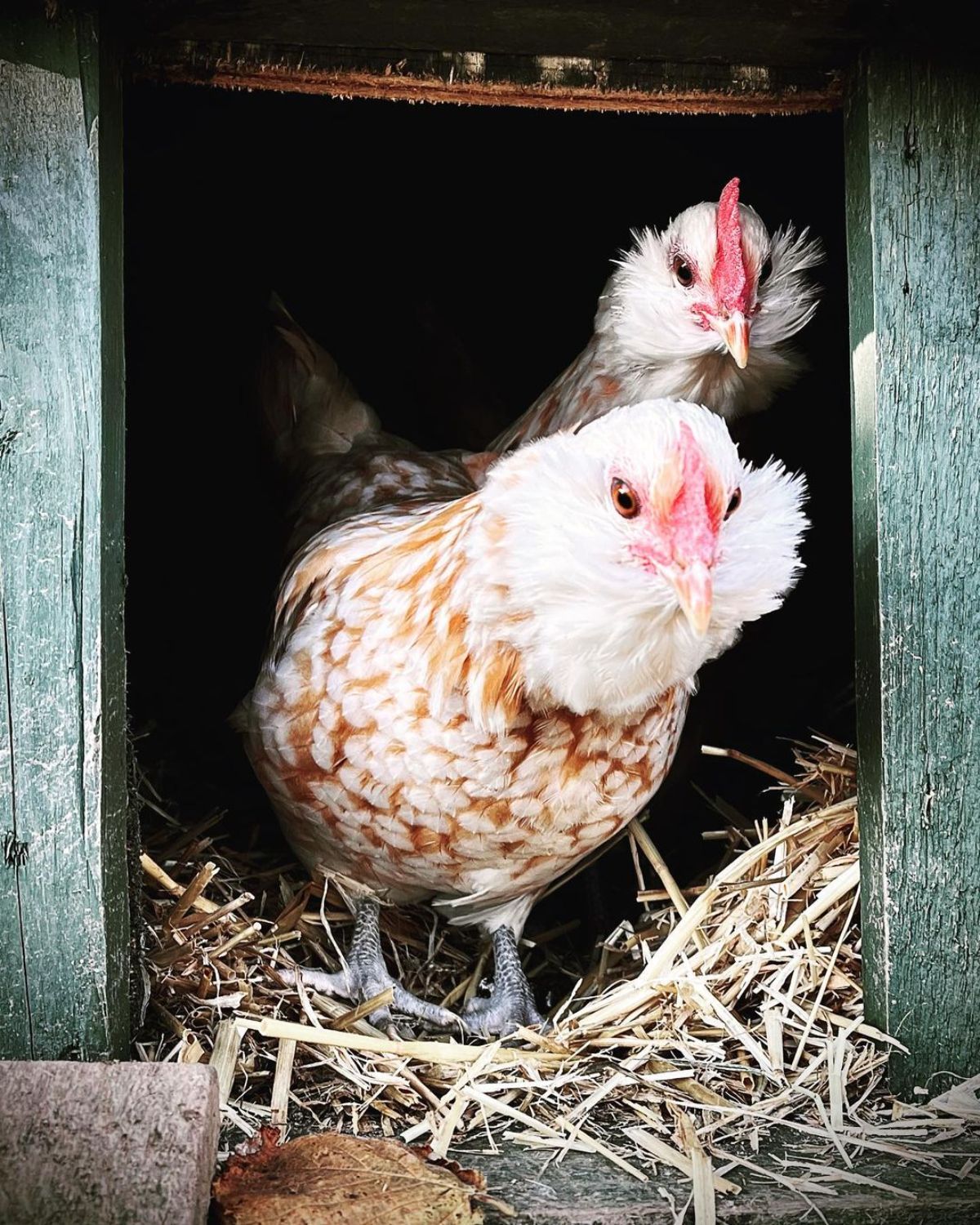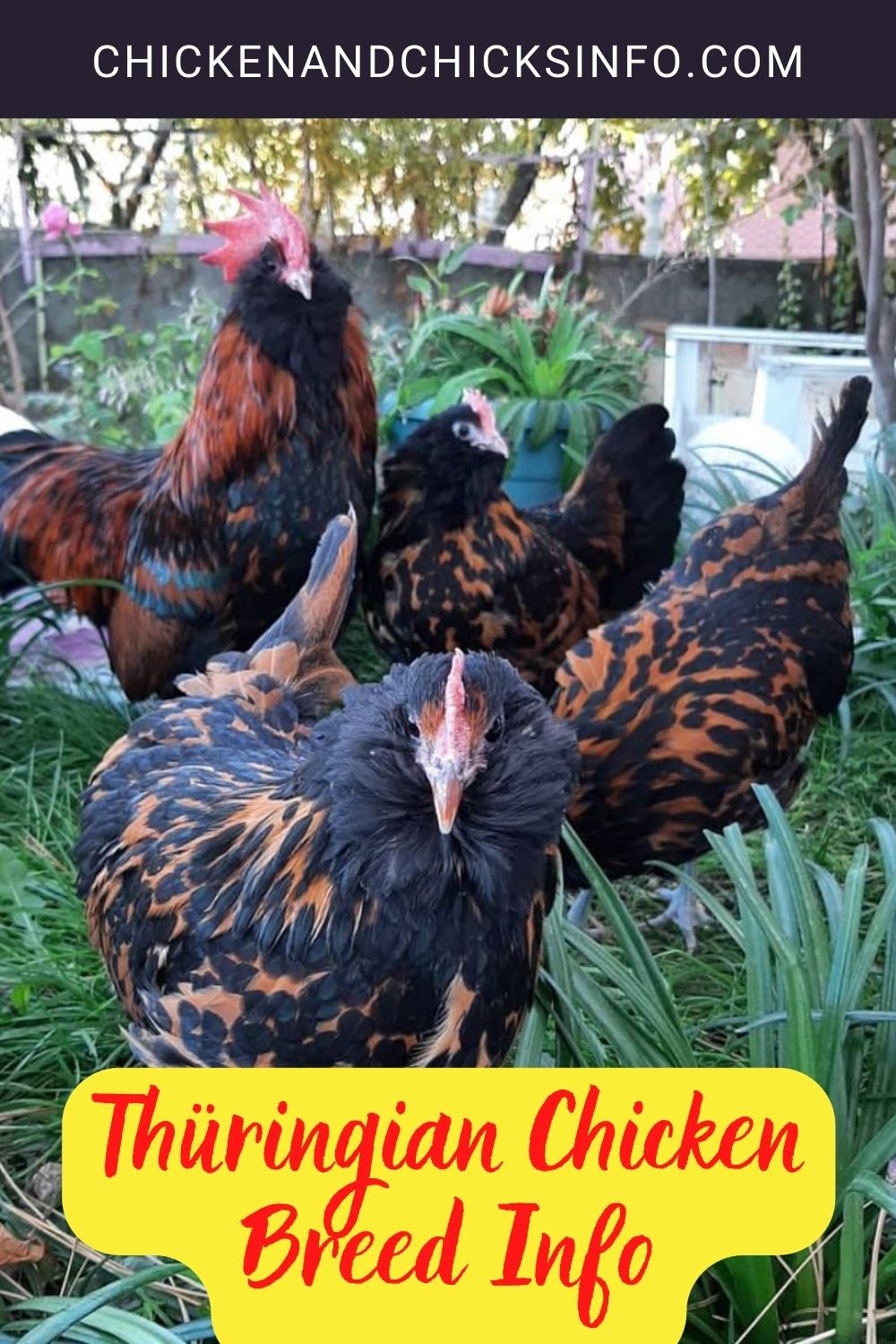The Thuringian chicken is a rare, ornamental bird that is mainly raised as a pet or show bird. They are nicknamed “chubby cheeks” because of their fluffy beards.

They are not generally raised for egg or meat production due to their small size, but hens will lay around 150 white eggs per year. They do not go broody but can be defensive mothers when they do.
Jump to:

Thüringian Chicken Breed Quick Info
Thüringian Chicken Description
| Thüringian Type/Size: | Standard |
| Feather Color: | Varies |
| Leg Type: | Clean |
| Leg Color: | Slate |
| Skin Color: | White |
| Thüringian Ease of Raising/Keeping: | Easy |
| Thüringian Special Care Needs: | No |
| Is the Thüringian breed a common, rare, or protected breed of chicken? | Rare |
Thüringian Use
| Meat | No |
| Eggs | No |
| Dual Purpose | No |
| Thüringian Temperament: | Friendly, curious |
| Thüringian Ability/Likelihood to Free Range: | Yes |
Thüringian Egg Production
| Egg Color | White |
| Egg Size | Medium |
| Estimated Number of Eggs Per Year | 150 |
| Likeliness to Brood Eggs/Raise Chicks | Low |
Thüringian Meat Production
| Dressed Weight Male | N/A |
| Dressed Weight Female | N/A |
Thüringian Climate Tolerance
| Heat | Good |
| Cold | Excellent |
Thüringian Age to Maturity
| Number of Months to Reach Full Size | 6 Months |
| Number of Months to Start Egg Laying | 5 Months |
| Number of Weeks/Months to Reach Meat Harvest Size | N/A |
Thüringian Size at Maturity
| Male | 5 lbs |
| Female | 4 lbs |
Origins of Thüringian Chicken

The Thüringian breed originated in Germany in the late 1700s in the Thuringer Forest region. They were originally bred as a dual-purpose breed and were used for egg and meat production.
They were imported to the United Kingdom many years after they were developed, in 2000. Today, they remain a rare breed. There are breeders and enthusiasts working to continue the breed and increase their popularity.
Some Things to Know About Thüringian Chicken

What makes this breed unique is their distinctive beard, ear muffs, and small comb. All of these attributes make them extremely winter-hardy (although they dislike the rain).
Unlike other bearded breeds who have a tri-lobed formation, the beard of the Thüringians is full and undivided around the entire face.
They have beautiful reddish-brown plumage dotted with black. They have a bright red single comb and wattles and clean, slate-colored legs. There is also a bantam version of the breed.
How Easy is it to Keep Thüringian Chickens?

These birds are active and like to forage, so they prefer to free range. However, they can manage confinement as long as there is a large enough space for them to move around.
They are friendly and curious, making them ideal pets and show birds. They are a great choice for beginner and experienced chicken owners alike!
Special Care and Considerations for Thüringian Chickens
Like all chickens with a single comb, there is a risk for Thruingian chickens developing frostbite in the winter. You can use a swipe of vaseline to help protect their comb and wattles from freezing in low temperatures.
Otherwise, the Thuringian chicken is a healthy, hardy chicken that is not prone to any major health issues.





